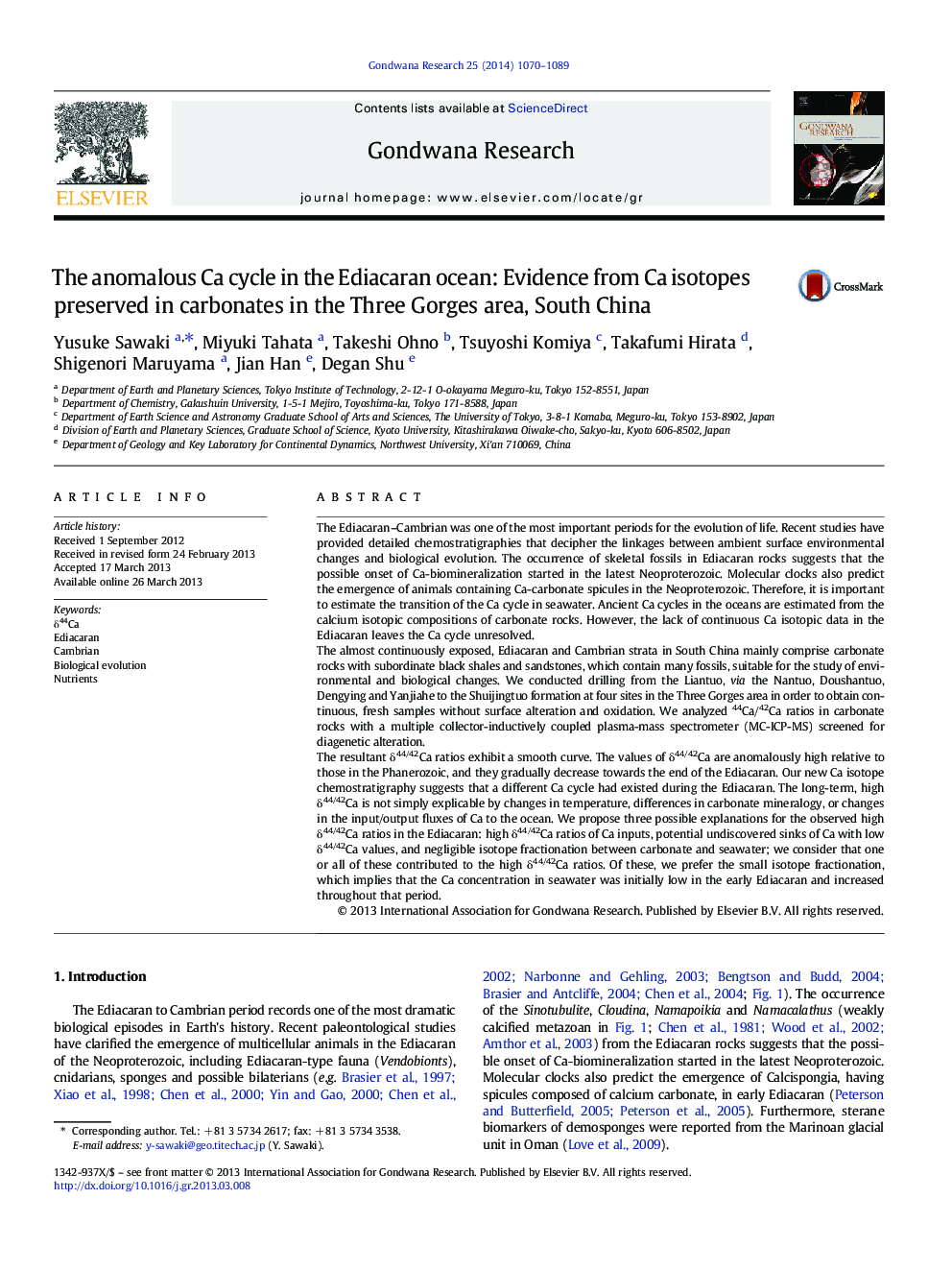| کد مقاله | کد نشریه | سال انتشار | مقاله انگلیسی | نسخه تمام متن |
|---|---|---|---|---|
| 4726976 | 1356355 | 2014 | 20 صفحه PDF | دانلود رایگان |

• We presented a new detailed chemostratigraphy of δ44/42Ca in the Ediacaran and Cambrian.
• Carbonates in the Ediacaran have higher δ44/42Ca ratios compared with those in the Phanerozoic.
• Undiscovered sinks of Ca and changes in isotope fractionation can explain the high δ44/42Ca.
• Shifts to low δ44/42Ca ratio were coincident with the appearances of calcifying macro-organisms.
The Ediacaran–Cambrian was one of the most important periods for the evolution of life. Recent studies have provided detailed chemostratigraphies that decipher the linkages between ambient surface environmental changes and biological evolution. The occurrence of skeletal fossils in Ediacaran rocks suggests that the possible onset of Ca-biomineralization started in the latest Neoproterozoic. Molecular clocks also predict the emergence of animals containing Ca-carbonate spicules in the Neoproterozoic. Therefore, it is important to estimate the transition of the Ca cycle in seawater. Ancient Ca cycles in the oceans are estimated from the calcium isotopic compositions of carbonate rocks. However, the lack of continuous Ca isotopic data in the Ediacaran leaves the Ca cycle unresolved.The almost continuously exposed, Ediacaran and Cambrian strata in South China mainly comprise carbonate rocks with subordinate black shales and sandstones, which contain many fossils, suitable for the study of environmental and biological changes. We conducted drilling from the Liantuo, via the Nantuo, Doushantuo, Dengying and Yanjiahe to the Shuijingtuo formation at four sites in the Three Gorges area in order to obtain continuous, fresh samples without surface alteration and oxidation. We analyzed 44Ca/42Ca ratios in carbonate rocks with a multiple collector-inductively coupled plasma-mass spectrometer (MC-ICP-MS) screened for diagenetic alteration.The resultant δ44/42Ca ratios exhibit a smooth curve. The values of δ44/42Ca are anomalously high relative to those in the Phanerozoic, and they gradually decrease towards the end of the Ediacaran. Our new Ca isotope chemostratigraphy suggests that a different Ca cycle had existed during the Ediacaran. The long-term, high δ44/42Ca is not simply explicable by changes in temperature, differences in carbonate mineralogy, or changes in the input/output fluxes of Ca to the ocean. We propose three possible explanations for the observed high δ44/42Ca ratios in the Ediacaran: high δ44/42Ca ratios of Ca inputs, potential undiscovered sinks of Ca with low δ44/42Ca values, and negligible isotope fractionation between carbonate and seawater; we consider that one or all of these contributed to the high δ44/42Ca ratios. Of these, we prefer the small isotope fractionation, which implies that the Ca concentration in seawater was initially low in the early Ediacaran and increased throughout that period.
Figure optionsDownload as PowerPoint slide
Journal: Gondwana Research - Volume 25, Issue 3, April 2014, Pages 1070–1089